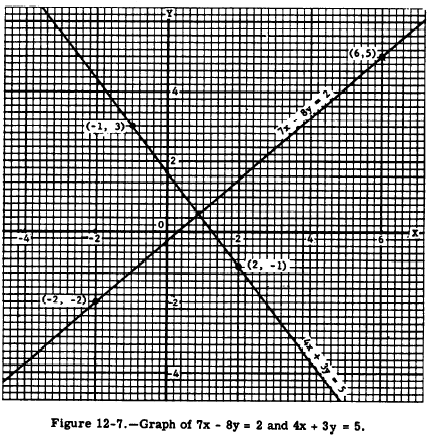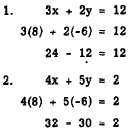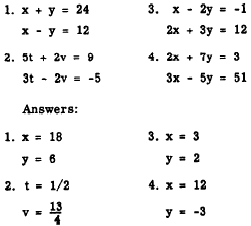|
Adding the equations would not eliminate either
x or y. However, if we multiply both members
of the second equation by - 1, then addition will
eliminate x, as follows:

The value of x is found by substituting 1 for y
in either of the original equations, as follows:

As a second example of the addition method,
find the solution of the simultaneous equations

Here both x and y have unlike coefficients. The
coefficients of one of the variables must be
made the same, except for their signs.
The coefficients of x will be the same except
signs, if both members of the first equation
are multiplied by 4 and both members of
the second equation by -3. Then addition will eliminate x.
Following this procedure to get the value of
y, we multiply the first equation by 4 and the
second equation by -3, as follows:

Substituting for y in the first equation to get the
value of x, we have


This solution is checked algebraically by
substituting 8 for x and -6 for y in each of the
original equations, as follows:

Practice problems. Use the addition method
to solve the following problems:

|







